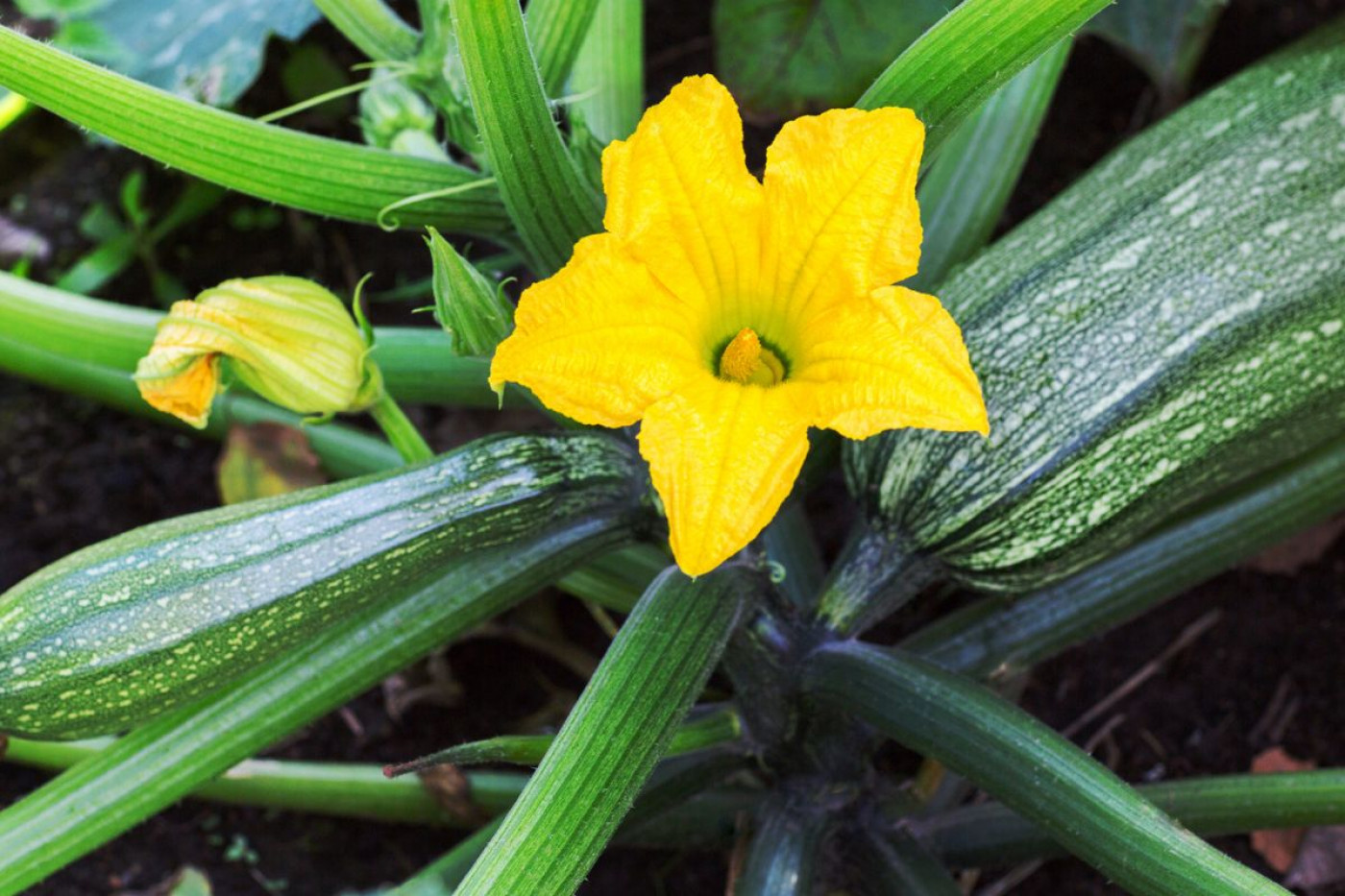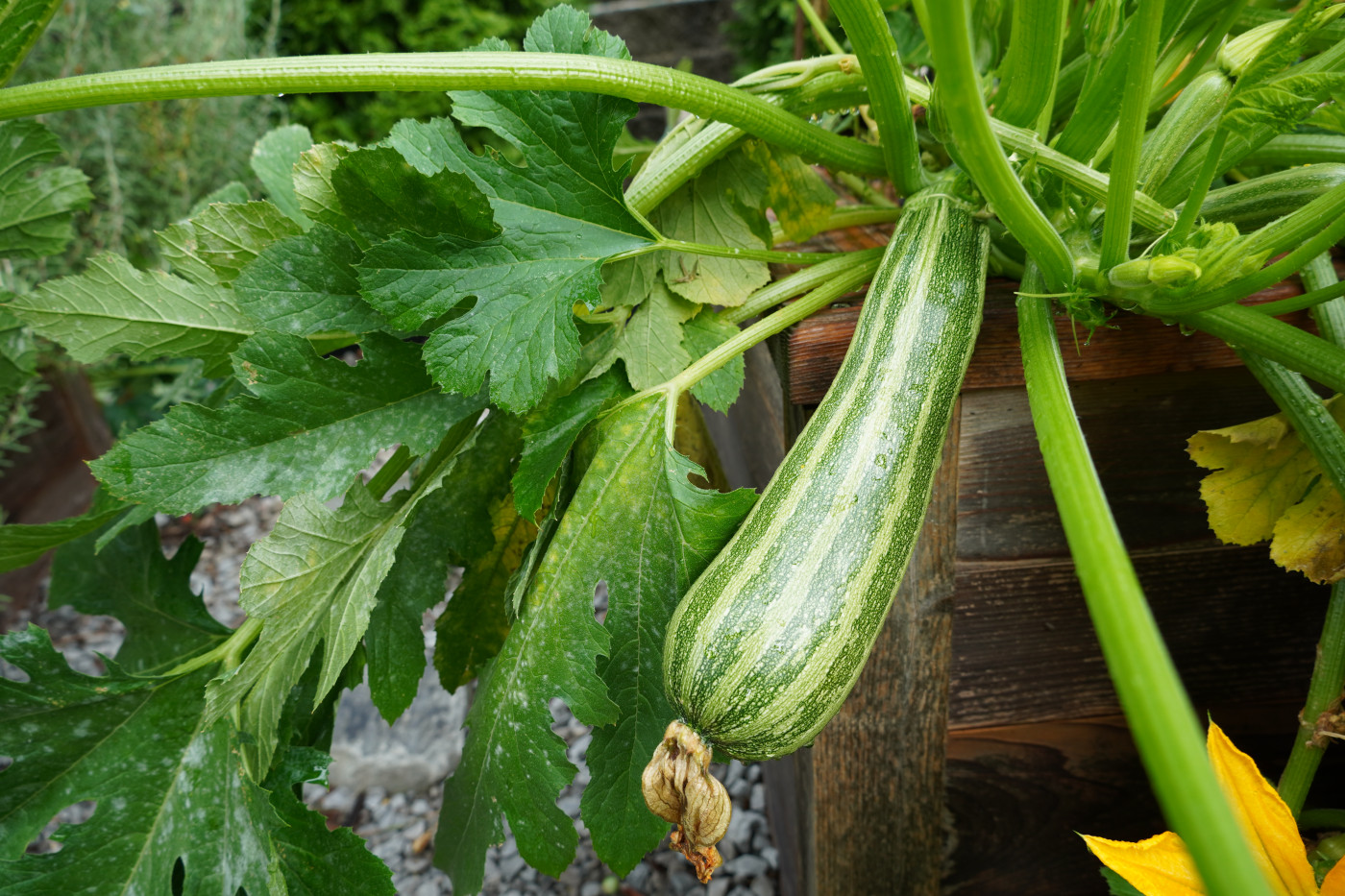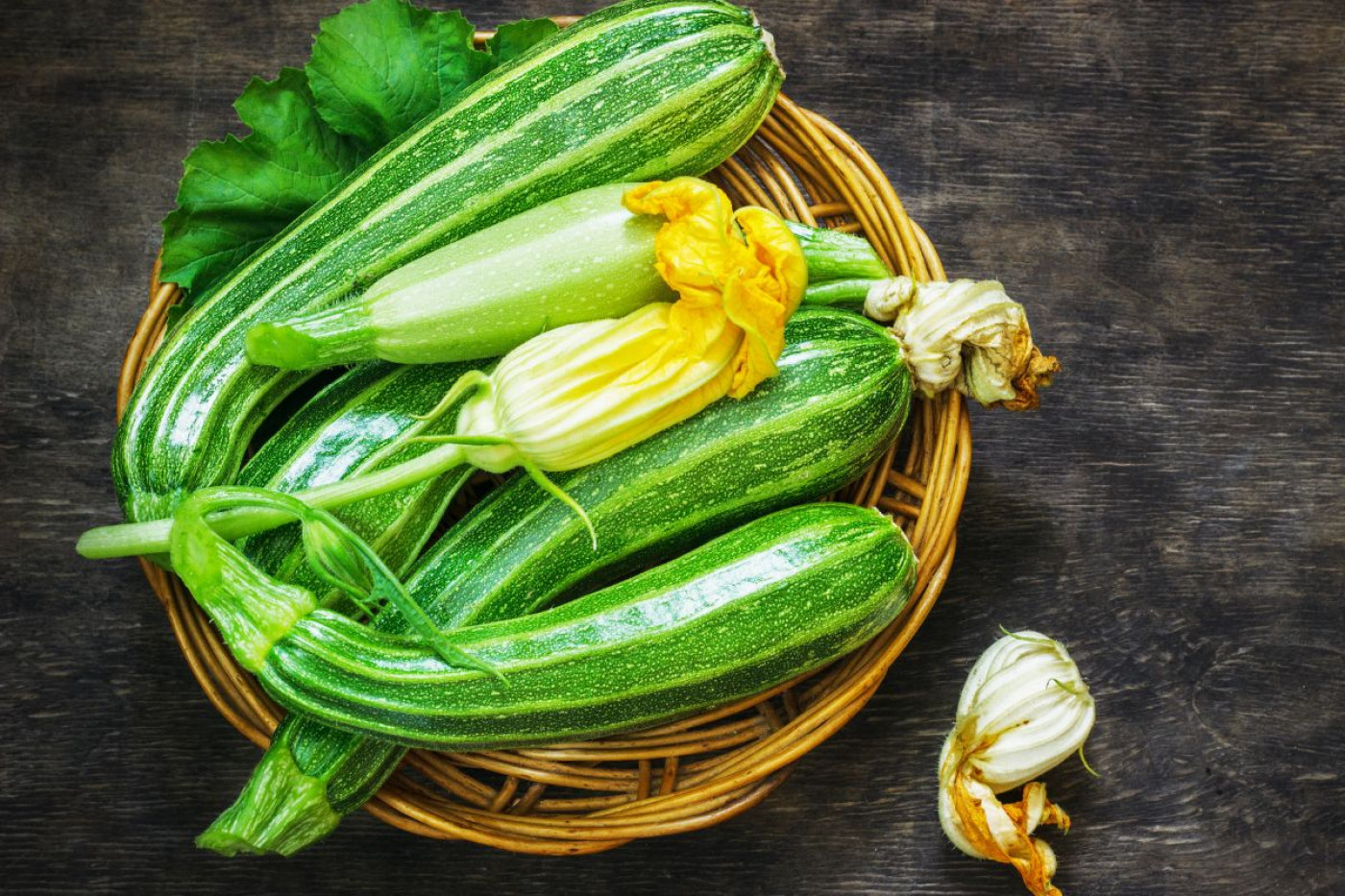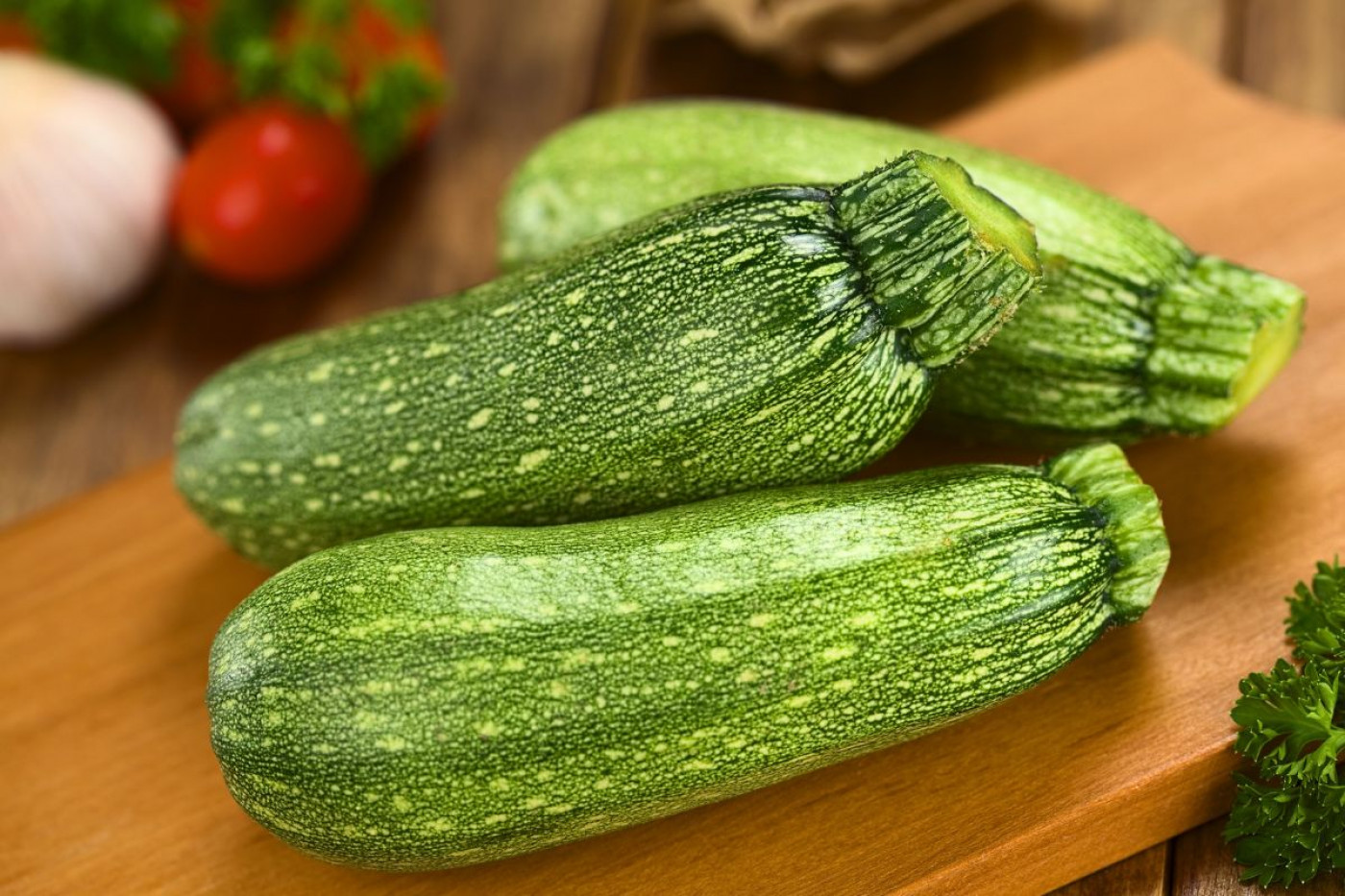At a Glance
- Learn how to grow zucchini vertically like a tomato to save space, boost airflow, and reduce pests and powdery mildew.
- Follow three simple steps: stake early, prune regularly, and plant closer together for higher yields and healthier plants.
- Discover how vertical growing supports companion planting, easier harvesting, and a more productive, organic kitchen garden.
How to Fix the #1 Mistake Gardeners Make with Zucchini
If your zucchini plant has ever taken over half your garden bed, or if you’ve ever found yourself battling powdery mildew halfway through summer, you’re not alone. Zucchini has a reputation for being easy to grow, and it is, but most gardeners grow it the wrong way.
When I first started growing zucchini, I did what everyone does: I let it sprawl across the soil, sending giant leaves in every direction. It looked impressive for about three weeks, until the plant started taking up half my raised bed, the leaves were lying in the soil, and the powdery mildew showed up right on cue.
Then I learned the secret that changed everything: grow zucchini vertically like a tomato.
Today, I’m sharing exactly how I do it. You’ll use less space, deal with fewer pests, and still get plenty of those delicious fruits.
Why Most Gardeners Grow Zucchini the Wrong Way
Zucchini looks like a bush plant, but it actually grows on a single main stem, just like a tomato. The big difference is that tomatoes are almost always grown vertically, while most gardeners let zucchini sprawl horizontally across the ground.
That horizontal growth habit is the main reason zucchini plants take up so much room and attract disease. When the leaves touch the soil, they stay wet longer and restrict airflow. This creates the perfect breeding ground for powdery mildew, squash vine borers, and other pests that love humid, crowded conditions.
The good news? There’s a simple three-step fix that will change your zucchini game forever.


Start Your Garden the Easy Way
Get growing with 10 foolproof seed varieties, a 120-page gardening guide, planting plans, and step-by-step video lessons—all designed to help you succeed. The Easy Garden Kit makes it simple, fun, and affordable to bring fresh food and flowers to your backyard.
Step 1: Stake or Trellis Your Zucchini
From day one, your goal is to train your zucchini to grow upward rather than outward. Think of it like training a tomato vine.
When you plant your zucchini seedling, add a sturdy stake or trellis right away. A single tomato stake, a tall garden spiral, or a vertical trellis system all work beautifully. By staking early, you prevent the stem from flopping over and sprawling across the soil.
If you already have an established zucchini, don’t worry, you can still train it to grow up. Gently lift the main stem and tie it loosely to the stake with soft twine or garden tape. Be careful not to bend or break it. Zucchini stems are hollow inside, which makes them surprisingly easy to snap.
When I do this, I use a little bit of jute twine and tie a simple loop around the stem. You just want to support the plant, not strangle it. Once it’s upright and tied to the trellis, it will continue growing upward naturally.
By staking your zucchini, you:
- Reduce the space it takes up in the garden.
- Increase airflow around the leaves.
- Dramatically lower your risk of powdery mildew and rot.
This simple shift alone can transform your gardening experience and harvest.
Step 2: Prune Your Zucchini Like a Tomato
This next step surprises a lot of gardeners. Pruning zucchini feels counterintuitive because those big leaves look like they’re doing all the work. But in reality, a zucchini left unpruned will produce leaf after leaf after leaf, often at the expense of fruit.
When I started pruning my zucchini plants, my yields doubled. Here’s why: when you prune, you direct the plant’s energy away from producing excessive foliage and toward producing more flowers and fruit.
Let’s talk about how to prune properly.
How to Prune Zucchini
Start by finding the lowest leaves at the base of the main stem. These are the oldest leaves, and they’re usually the ones touching the soil. Carefully remove them with clean pruning shears, cutting as close to the main stem as possible.
Because zucchini stems are hollow, it’s important to cut flush against the main stem to avoid leaving an open wound. Open, exposed stems can invite pests and disease.
Work your way up the plant each week, removing older leaves as new ones form. Always prune gradually; never remove more than one-third of the plant at a time.
The rule of thumb is simple: only the leaves above the newest flowers are feeding the fruit. Those are the leaves that matter most. Anything below that point is shading the plant, blocking airflow, and stealing energy that could go toward making more zucchini.
The Benefits of Regular Pruning
- More fruit production: Energy is redirected to flowers instead of unnecessary leaves.
- Better airflow: Prevents disease and mildew buildup.
- Easier harvesting: You can actually see the zucchini before they turn into giant baseball bats overnight!
- Happier plants: They get more sunlight where it counts—at the growing tip.
Once you get the hang of it, pruning becomes second nature. Your garden will look tidier, and the harvest will typically increase.
Step 3: Plant Zucchini Closer Together
Once you start growing zucchini vertically, you’ll notice how much space you’ve freed up in your bed. A traditional sprawling plant might need 3 to 4 square feet of space, but a staked zucchini needs significantly less.
That means you can fit more plants into the same area. For example, if you’re using a three-foot-wide trellis, you can plant three zucchini—one at each third of the trellis—and grow them all upward.
This not only gives you a bigger harvest, but it also makes it easier to companion plant.
Companion Plants for Zucchini
When your zucchini grows vertically, you can plant right alongside it with crops that:
- Attract pollinators: Flowers like nasturtiums, calendula, or marigolds bring bees and butterflies to your garden.
- Repel pests: Herbs like basil, oregano, and dill help keep unwanted insects away.
- Add nutrients: Beans and peas fix nitrogen into the soil, naturally feeding your zucchini plants.
A trellised zucchini bed filled with herbs, flowers, and legumes not only looks beautiful but also functions as a self-supporting mini ecosystem.
The Bonus Benefit: Fewer Pests and Less Disease
If you’ve ever lost zucchini to powdery mildew or squash vine borers, vertical growing will feel like a miracle.
When the plant is upright, its leaves aren’t resting against damp soil. This single change improves airflow and reduces humidity around the plant, which are the exact conditions powdery mildew needs to spread.
It also makes it easier to spot early signs of trouble. You can see the undersides of leaves, remove pests by hand, and keep an eye on new growth without crouching over a jungle of overlapping foliage.
If you do end up with a touch of mildew, don’t panic. Mix one tablespoon of apple cider vinegar or white vinegar in one quart of water, pour it into a spray bottle, and mist the affected leaves lightly. Do this on a cool morning or evening, never in direct sunlight. The mild acidity helps stop mildew from spreading without harming your plant.
And as always, avoid synthetic sprays or harsh chemicals. Zucchini grown organically in living, compost-rich soil will naturally resist most disease pressure when given the right structure and airflow.
What Vertical Zucchini Looks Like in Practice
The first time I trained my zucchini up a stake (and pruned it appropriately), I couldn’t believe how compact it was. The leaves stood tall and clean, no longer dragging in the dirt, and harvesting was effortless.
By midsummer, the single main stem had grown nearly 3 feet tall, with fruit hanging neatly below the upper leaves. I tied the stem gently to the stake every week or so as it climbed.
Each time I pruned off the lower leaves, I could see the difference in airflow and plant health. No mildew, no soft spots, no pests hiding in the shade. Just glossy green fruit and healthy, vibrant growth.
I also noticed another bonus: the raised leaves created the perfect canopy for smaller plants underneath. I tucked in a few radishes around the base (my go-to "bonus" crop). The zucchini shaded the soil, and the companion plants made the bed look lush and full.
Common Mistakes to Avoid
- Tying too tightly: Always leave space for the stem to expand. Loose loops are best.
- Waiting too long to stake: Although you can still stake a grown plant, it's far easier to do it early on. Add support at planting time, not after the plant sprawls.
- Over-pruning: Never remove more than one-third of the plant at once.
- Ignoring airflow: Even when vertical, overcrowding can still trap humidity.
- Using synthetic sprays: These harm beneficial insects and disrupt the natural balance of your garden.
Zucchini Harvests ThatSpeak for Themselves
My current zucchini plant was started from seed just 50 days ago. With a single seed, I’ve already harvested multiple fruits, and it’s still producing. No mildew, no bugs, no sprawling mess—just steady, healthy growth.
Zucchini really is one of the easiest plants to grow when you work with it instead of against it. Treat it like a tomato: stake it, prune it, and give it room to breathe. In return, it will reward you with a continuous harvest all season long.
If you’ve been frustrated with zucchini in the past—oversized plants, mildew-covered leaves, or fruit rotting before harvest—this method is your fresh start.
Vertical growing gives you:
- More zucchini in less space
- Cleaner plants with fewer pests
- Easier harvesting and maintenance
- Healthier, more productive soil
And once you’ve mastered this method, you’ll see how easily it applies to other members of the squash family, too. This season, skip the zucchini jungle and grow your plants like tomatoes—tall, tidy, and absolutely thriving.




